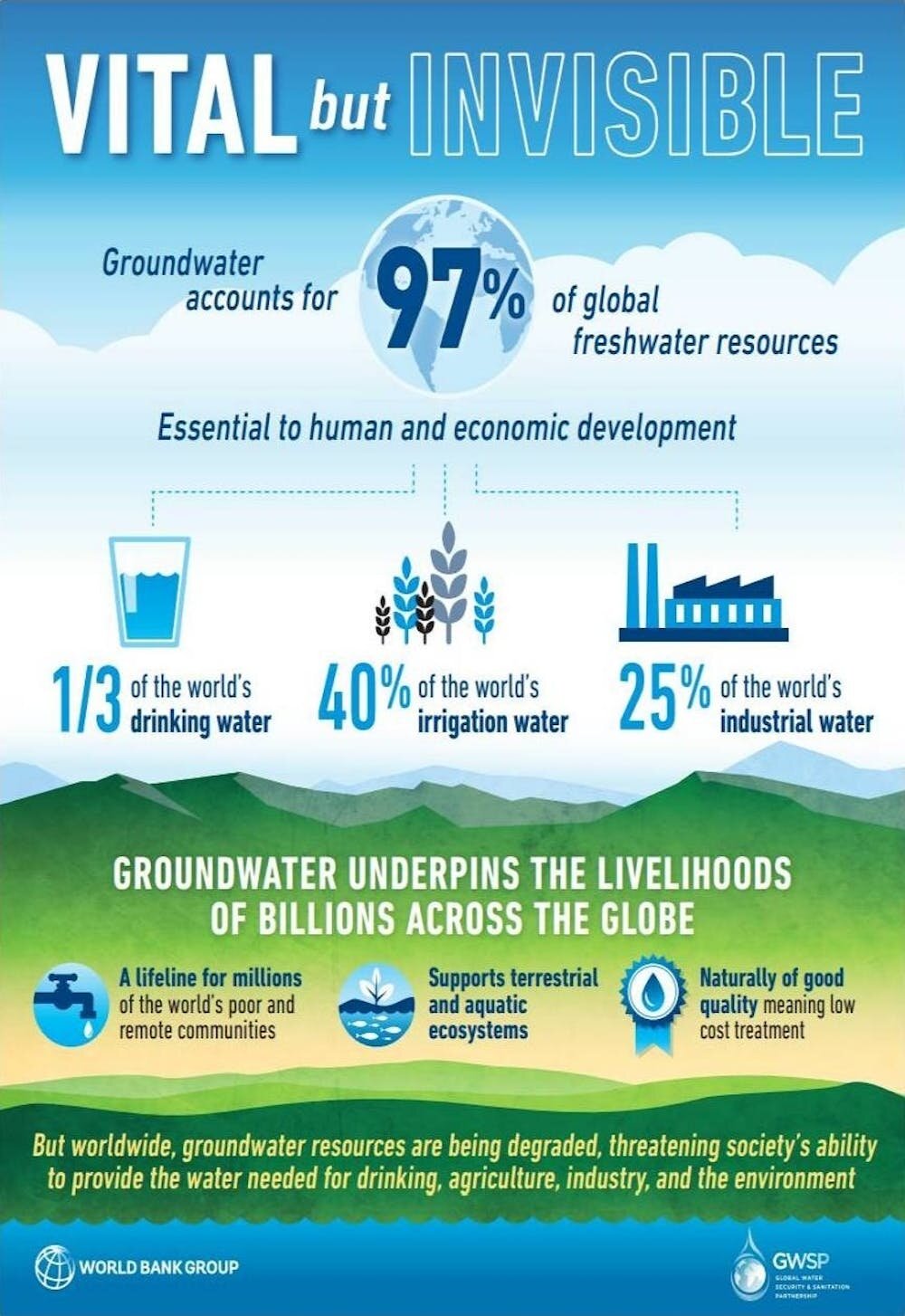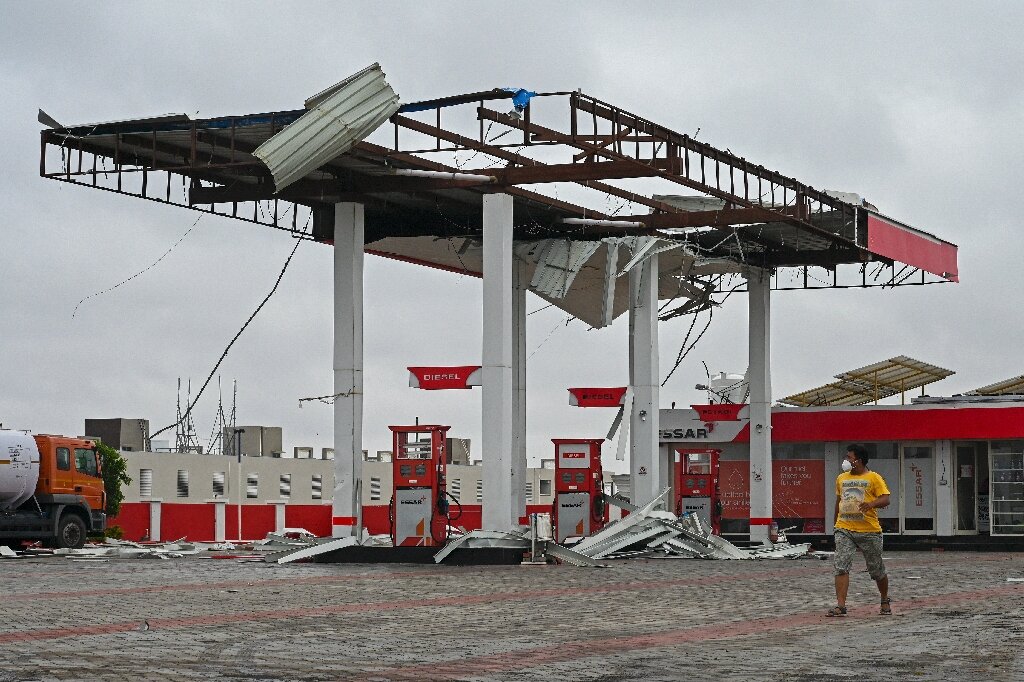#Humans are depleting groundwater worldwide, but there are ways to replenish it

Table of Contents

If you stand at practically any point on Earth, there is water moving through the ground beneath your feet. Groundwater provides about half of the world’s population with drinking water and nearly half of all water used to irrigate crops. It sustains rivers, lakes and wetlands during droughts.
Groundwater is a renewable resource, but it can take decades or even centuries for some aquifers to recover after they are depleted. Current understanding of this challenge is based mainly on where and how frequently people record measurements of water levels in wells.
In a newly published study, a team of data scientists, water specialists and policy experts compiled the first global-scale dataset of these levels. We analyzed millions of groundwater level measurements in 170,000 wells located in over 40 countries and mapped how groundwater levels have changed over time.
Our study has two main findings. First, we show that rapid groundwater depletion is widespread around the world and that rates of decline have accelerated in recent decades, with levels falling by 20 inches or more yearly in some locations. Second, however, our research also reveals many cases where deliberate actions halted groundwater depletion. These results show that societies are not inevitably doomed to drain their groundwater supplies, and that with timely interventions, this important resource can recover.
Portrait of a thirsty planet
Many factors determine groundwater levels, including geology, climate and land use. But groundwater levels that are dropping deeper and deeper in a particular location often signal that people are pumping it out faster than nature can replenish it.
Some of the 300 million measurements we compiled were recorded by automated measuring devices. Many others were made in the field by people around the globe. And these measurements paint a worrying picture.
They show that groundwater levels have declined since the year 2000 in far more places than they rose. In many locations, especially arid zones that are heavily farmed and irrigated, groundwater levels are falling by more than 20 inches (0.5 meters) per year. Examples include Afghanistan, Chile, China, Peninsular India, Iran, Mexico, Morocco, Saudi Arabia, Spain and the U.S. Southwest.
Our second and more concerning finding is that in about one-third of the areas where we compiled measurements, the rate of groundwater decline is accelerating. Accelerated groundwater decline is common in dry climates where large swaths of land are used for agriculture. This suggests a potential link between groundwater-fed irrigation and intensifying groundwater depletion.
What happens when groundwater is overused?
Rapid and accelerating groundwater-level declines have many harmful effects.
Drinking-water supplies from wells and springs can run dry when groundwater levels decline. People and communities who rely on those wells can lose access to what may be their sole source of accessible fresh water for drinking.
For example, wells that supply fresh water to homes are running dry in California’s San Joaquin Valley, where groundwater depletion has accelerated since the early 2000s. This problem is likely to continue and worsen unless action is taken to stabilize groundwater reserves.
Wells that run dry can also threaten crop production. Groundwater depletion has long been viewed as one of the greatest threats to global irrigated agriculture, because wells supply nearly half of the water used for irrigation globally.
In areas where groundwater typically drains to rivers, falling groundwater levels can reverse this flow and cause rivers to leak into the subsurface. This affects the river’s ecology and reduces water supplies downstream. In the U.S., leaky streams are more common where groundwater withdrawal rates are high, highlighting how groundwater pumping can directly reduce the amount of water that flows underground into nearby rivers.
Groundwater declines can also cause land surfaces to sink. Land subsidence has increased flood risks in dozens of coastal cities worldwide, including Jakarta, Tokyo, Istanbul, Mumbai, Auckland and the Tampa Bay area of Florida.
Farther from the coast, land subsidence can damage infrastructure. It poses a critical challenge in areas where groundwater levels have declined, including Tehran and Mexico City. In many cases, the main culprit is excessive groundwater pumping.
Finally, falling groundwater can cause seawater to move inland underground and contaminate coastal groundwater systems—a process known as seawater intrusion. When seawater intrudes, coastal aquifers can become too saline to use for drinking water without energy-intensive desalination.
How to replenish groundwater supplies
We also found places where groundwater levels are recovering. The strategies that communities used to replenish their groundwater sources included developing new alternative water supplies, such as local rivers; adopting policies to reduce demand for groundwater; and intentionally replenishing aquifers with surface water.
The town of El Dorado, Arkansas, saw its groundwater levels drop by roughly 200 feet (60 meters) from 1940 through 2000 as local industries pumped water from the aquifer. In 1999, a new policy established a pumping fee structure, giving businesses an incentive to find a new water supply. By 2005, a pipeline had been built to divert water from the Ouachita River to El Dorado. This new source reduced demand for groundwater, and groundwater levels have risen in the area since 2005.
In Bangkok, so many private wells were drilled for domestic, industrial or commercial purposes between 1980 and 2000 that groundwater pumping doubled and groundwater levels fell. Officials responded by quadrupling groundwater extraction fees between 2000 and 2006. Total groundwater pumping declined, and levels began to recover as users found other water sources.
In a valley near Tucson, Arizona, groundwater levels declined by 100 feet (30 meters) as withdrawals for irrigation increased after the 1940s. To help replenish the depleted groundwater, leaky ponds were constructed. These ponds are filled with water from the Colorado River that is moved hundreds of miles to the area via canals. As these ponds leak, they refill the depleted aquifer. Because of these leaky ponds, groundwater levels in the valley have risen by about 200 feet (60 meters) in places.
Our analysis shows how important it is to monitor groundwater levels in many locations. With groundwater levels declining in many places, communities and businesses that depend on it need accurate information about their water supplies so they can act in time to protect them.
This article is republished from The Conversation under a Creative Commons license. Read the original article.![]()
Citation:
Humans are depleting groundwater worldwide, but there are ways to replenish it (2024, January 27)
retrieved 27 January 2024
from https://phys.org/news/2024-01-humans-depleting-groundwater-worldwide-ways.html
This document is subject to copyright. Apart from any fair dealing for the purpose of private study or research, no
part may be reproduced without the written permission. The content is provided for information purposes only.
If you liked the article, do not forget to share it with your friends. Follow us on Google News too, click on the star and choose us from your favorites.
If you want to read more Like this articles, you can visit our Science category.



